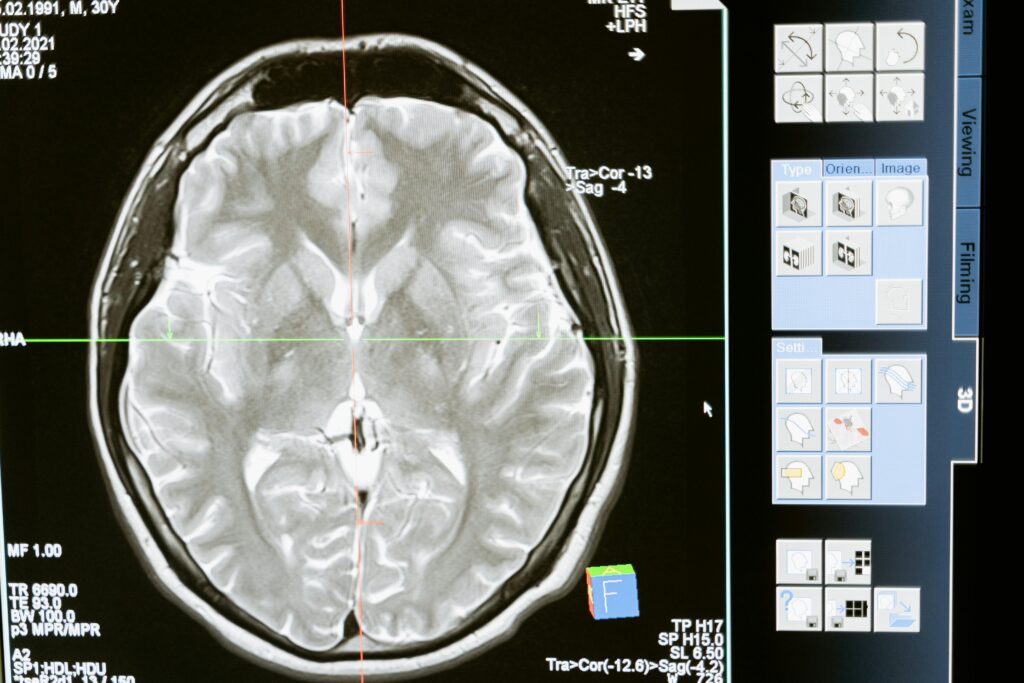
Introduction: The AI Revolution Transforming Our World
Artificial Intelligence represents one of the most transformative technological advances in human history, fundamentally reshaping how we work, live, and interact with the digital world. From the early theoretical foundations laid by pioneers like Alan Turing to today’s sophisticated machine learning systems, AI has evolved from science fiction concept to an integral part of modern society.
At its core, Artificial Intelligence refers to computer systems designed to perform tasks that typically require human intelligence. These tasks include learning from experience, recognizing patterns, making decisions, understanding natural language, and solving complex problems. What distinguishes modern AI from traditional computer programming is its ability to adapt, improve, and generate new insights without explicit programming for every scenario.
The current AI landscape is characterized by unprecedented capabilities and accessibility. Machine learning algorithms can now process vast amounts of data to identify patterns invisible to human observers, natural language processing enables computers to understand and generate human-like text, and computer vision systems can interpret visual information with remarkable accuracy. This technological maturation has created opportunities across virtually every industry and aspect of human endeavor.
Understanding the Foundations of Artificial Intelligence
Core AI Technologies and Concepts
Artificial Intelligence encompasses several interconnected technologies, each serving specific functions while contributing to the broader AI ecosystem. Machine Learning represents the foundational technology that enables systems to learn and improve from experience without being explicitly programmed for every task. This approach allows AI systems to identify patterns in data, make predictions, and adapt their behavior based on new information.
Deep Learning, a subset of machine learning, utilizes artificial neural networks inspired by the human brain’s structure. These networks consist of multiple layers that process information progressively, enabling systems to recognize complex patterns in data such as images, speech, and text. The “deep” aspect refers to the multiple layers of processing that allow for increasingly sophisticated pattern recognition and decision-making capabilities.
Natural Language Processing bridges the gap between human communication and computer understanding. NLP enables machines to comprehend, interpret, and generate human language in ways that are both meaningful and contextually appropriate. This technology powers everything from voice assistants to language translation services and content generation tools.
Computer Vision gives machines the ability to interpret and analyze visual information from the world around them. Through sophisticated algorithms, AI systems can identify objects, faces, scenes, and activities in images and videos, enabling applications ranging from medical imaging to autonomous vehicles.
Types of AI Systems
Artificial Intelligence systems are typically categorized into three main types based on their capabilities and scope. Narrow AI, also known as Weak AI, represents the current state of most AI implementations. These systems are designed to perform specific tasks exceptionally well but lack the ability to generalize beyond their designated functions. Examples include recommendation algorithms, speech recognition systems, and image classification tools.
General AI, or Strong AI, represents the theoretical goal of creating machines with human-like cognitive abilities across all domains. These systems would possess the flexibility to understand, learn, and apply knowledge across different contexts, much like human intelligence. While General AI remains a future aspiration, significant research continues toward this goal.
Superintelligent AI represents the hypothetical scenario where artificial systems surpass human intelligence across all domains. This concept remains largely theoretical and is the subject of ongoing debate among researchers, ethicists, and policymakers regarding its potential implications and timelines.
AI Applications Across Industries

Healthcare: Revolutionizing Medical Practice
The healthcare industry has emerged as one of the most promising domains for AI implementation, with applications spanning diagnosis, treatment planning, drug discovery, and patient care management. Medical imaging represents one of the most successful AI applications, where deep learning systems can analyze X-rays, MRIs, CT scans, and other medical images with accuracy often exceeding human specialists.
AI-powered diagnostic tools can identify early-stage cancers, detect diabetic retinopathy in eye scans, and analyze skin lesions for potential malignancies. These systems not only improve diagnostic accuracy but also enable earlier detection, potentially saving countless lives through timely intervention. The speed at which AI can process medical images also helps reduce waiting times for patients and enables healthcare providers to handle larger patient volumes efficiently.
Drug discovery and development have been transformed by AI’s ability to analyze vast molecular datasets and predict potential therapeutic compounds. Traditional drug development can take over a decade and cost billions of dollars, but AI systems can accelerate the initial discovery phase by identifying promising compounds and predicting their behavior in biological systems. Companies are using AI to repurpose existing drugs for new conditions, design novel therapeutic molecules, and optimize clinical trial designs.
Personalized medicine represents another frontier where AI excels by analyzing individual patient data, including genetic information, medical history, and lifestyle factors, to develop tailored treatment plans. This approach moves beyond one-size-fits-all treatments to therapies optimized for individual patients, potentially improving outcomes while reducing adverse effects.
Finance: Enhancing Security and Decision-Making

The financial services industry has embraced AI across multiple functions, from fraud detection and risk assessment to algorithmic trading and customer service. Fraud detection systems utilize machine learning algorithms to analyze transaction patterns in real-time, identifying suspicious activities that might indicate fraudulent behavior. These systems can process millions of transactions simultaneously, flagging anomalies for human review while allowing legitimate transactions to proceed seamlessly.
Risk assessment and credit scoring have been revolutionized by AI’s ability to analyze diverse data sources beyond traditional credit metrics. Machine learning models can incorporate alternative data such as social media activity, spending patterns, and digital footprints to assess creditworthiness, potentially expanding access to financial services for underserved populations while maintaining appropriate risk management.
Algorithmic trading represents one of the most sophisticated applications of AI in finance, where systems can analyze market conditions, news sentiment, and economic indicators to execute trades at speeds impossible for human traders. These systems can identify arbitrage opportunities, predict market movements, and optimize portfolio allocations based on complex risk-return calculations.
Robo-advisors have democratized investment management by providing AI-powered financial planning and portfolio management services to retail investors. These platforms can create diversified portfolios, rebalance investments automatically, and provide personalized financial advice based on individual goals and risk tolerance.
Manufacturing: Optimizing Production and Quality
Manufacturing has witnessed significant transformation through AI implementation, with applications spanning predictive maintenance, quality control, supply chain optimization, and production planning. Predictive maintenance systems analyze sensor data from machinery to predict potential failures before they occur, reducing downtime and maintenance costs while extending equipment lifespan.
Quality control has been enhanced through computer vision systems that can inspect products with greater accuracy and consistency than human inspectors. These systems can detect defects, measure dimensions, and verify assembly correctness at production speeds, ensuring higher quality standards while reducing waste.
Supply chain optimization utilizes AI to predict demand, optimize inventory levels, and coordinate logistics across complex global networks. Machine learning algorithms can analyze historical data, market trends, and external factors to forecast demand accurately, enabling manufacturers to maintain optimal inventory levels while minimizing carrying costs.
Smart manufacturing systems integrate AI across entire production processes, creating adaptive factories that can optimize workflows, adjust production parameters in real-time, and coordinate between different manufacturing cells autonomously. These systems represent the evolution toward Industry 4.0, where physical and digital systems merge to create highly efficient and flexible manufacturing operations.
Transportation: Autonomous Systems and Optimization
The transportation industry is experiencing unprecedented change through AI implementation, with autonomous vehicles representing the most visible transformation. Self-driving cars utilize multiple AI technologies, including computer vision for object detection, sensor fusion for environmental awareness, and decision-making algorithms for navigation and safety.
Traffic management systems employ AI to optimize traffic flow in urban environments, reducing congestion and emissions while improving safety. These systems can analyze real-time traffic data, adjust signal timing, and route vehicles efficiently through road networks.
Logistics and delivery optimization utilize AI to plan optimal routes, predict delivery times, and coordinate fleet operations. Companies can reduce fuel costs, improve delivery reliability, and enhance customer satisfaction through intelligent routing and scheduling systems.
Aviation benefits from AI through enhanced flight planning, predictive maintenance for aircraft, and improved air traffic management. AI systems can optimize flight paths for fuel efficiency, predict weather impacts, and coordinate complex airspace management tasks.
Retail and E-commerce: Personalizing Customer Experience

Retail and e-commerce have been transformed by AI’s ability to personalize customer experiences, optimize pricing, and streamline operations. Recommendation systems analyze customer behavior, purchase history, and preferences to suggest relevant products, significantly improving sales conversion rates and customer satisfaction.
Dynamic pricing algorithms can adjust prices in real-time based on demand, competition, inventory levels, and customer segments. This approach allows retailers to maximize revenue while remaining competitive in fast-changing markets.
Inventory management benefits from AI’s predictive capabilities, enabling retailers to forecast demand accurately, optimize stock levels, and reduce waste from unsold inventory. These systems can account for seasonal trends, promotional impacts, and external factors affecting demand.
Customer service has been enhanced through AI-powered chatbots and virtual assistants that can handle routine inquiries, provide product information, and assist with order processing. These systems can operate continuously, reducing wait times while freeing human agents to handle more complex customer needs.
Education: Personalizing Learning Experiences
Educational technology has embraced AI to create personalized learning experiences, automate administrative tasks, and enhance educational outcomes. Adaptive learning systems can adjust content difficulty, pacing, and teaching methods based on individual student performance and learning styles.
Intelligent tutoring systems provide personalized instruction and feedback, identifying knowledge gaps and providing targeted remediation. These systems can supplement traditional teaching methods, offering additional support for struggling students while challenging advanced learners.
Automated grading and assessment tools can evaluate student work beyond simple multiple-choice questions, analyzing essays, coding assignments, and complex problem solutions. This capability reduces teacher workload while providing consistent and timely feedback to students.
Educational analytics utilize AI to analyze student data, identifying patterns that indicate risk of dropout, predicting academic performance, and recommending interventions to support student success.
Leveraging AI for Business Success
Strategic Planning and Implementation
Successfully integrating AI into business operations requires strategic planning that aligns AI initiatives with organizational goals and capabilities. Companies must begin by identifying specific business problems that AI can address, rather than implementing AI for its own sake. This problem-first approach ensures that AI investments deliver measurable business value.
Assessment of organizational readiness represents a critical first step in AI adoption. Companies must evaluate their digital infrastructure, data quality and availability, technical capabilities, and organizational culture’s receptiveness to change. Many successful AI implementations require significant investments in data infrastructure and employee training before AI systems can be effectively deployed.
Developing an AI strategy requires clear identification of use cases with the highest potential impact and feasibility. Companies should prioritize projects that offer clear business value, have access to quality data, and can be implemented with existing or readily acquired capabilities. Starting with smaller, focused projects allows organizations to build expertise and demonstrate value before tackling more complex initiatives.
Change management becomes crucial when implementing AI systems, as these technologies often alter existing workflows and job responsibilities. Successful companies invest in employee training, communicate the benefits of AI adoption clearly, and address concerns about job displacement through retraining and role evolution rather than replacement.
Data Strategy and Infrastructure

AI success fundamentally depends on data quality and accessibility. Organizations must develop comprehensive data strategies that encompass data collection, storage, processing, and governance. High-quality, well-organized data serves as the foundation for effective AI systems, while poor data quality can undermine even the most sophisticated algorithms.
Data governance frameworks ensure that data is collected ethically, stored securely, and used in compliance with relevant regulations. Companies must establish clear policies for data privacy, security, and access while ensuring that data scientists and AI systems have access to the information needed for effective model development.
Infrastructure requirements for AI often exceed traditional IT capabilities, particularly for organizations implementing machine learning systems that require significant computational resources. Cloud computing platforms have democratized access to AI infrastructure, allowing companies to scale computing resources based on demand while avoiding large upfront investments in specialized hardware.
Data integration challenges arise when AI systems need to access information from multiple sources within an organization. Companies must invest in systems that can aggregate data from different departments, applications, and external sources while maintaining data quality and consistency.
Building AI Capabilities
Developing internal AI capabilities requires a multifaceted approach involving talent acquisition, training, and organizational structure. Companies can choose between building internal AI teams, partnering with external providers, or adopting hybrid approaches that combine internal capabilities with external expertise.
Talent acquisition in AI requires understanding the different roles involved in AI development and deployment. Data scientists focus on model development and analysis, machine learning engineers handle system implementation and scaling, data engineers manage data infrastructure, and AI product managers coordinate between technical teams and business stakeholders.
Training existing employees represents a cost-effective approach to building AI capabilities. Many roles can be enhanced through AI literacy training, while technical employees can develop specialized AI skills through focused educational programs. This approach leverages existing organizational knowledge while building new capabilities.
Partnerships with AI vendors, consultants, and academic institutions can accelerate AI adoption while building internal expertise. These relationships provide access to specialized knowledge and proven solutions while allowing organizations to learn from external expertise.
Measuring AI Success and ROI
Establishing clear metrics for AI success ensures that investments deliver expected returns and enables continuous improvement. Companies must define both technical metrics that measure AI system performance and business metrics that demonstrate organizational impact.
Technical metrics include model accuracy, processing speed, system reliability, and scalability. These measurements ensure that AI systems perform as expected and meet technical requirements for production deployment.
Business metrics translate AI performance into organizational outcomes such as revenue growth, cost reduction, customer satisfaction improvement, or operational efficiency gains. These measurements demonstrate the business value of AI investments and guide future investment decisions.
Return on investment calculations for AI must account for both direct costs such as technology and personnel expenses and indirect benefits such as improved decision-making, risk reduction, and competitive advantages. ROI measurement periods should align with the nature of AI benefits, which may accrue over time as systems learn and improve.
Continuous monitoring and optimization ensure that AI systems maintain performance over time and adapt to changing business conditions. Regular model retraining, performance assessment, and system updates prevent degradation and maintain business value.
Enhancing Productivity Through AI Integration

Workflow Automation and Optimization
AI-powered workflow automation represents one of the most immediate opportunities for productivity enhancement across organizations. Robotic Process Automation combined with AI capabilities can handle complex tasks that previously required human intervention, from document processing and data entry to customer inquiry routing and compliance monitoring.
Intelligent document processing systems can extract information from unstructured documents such as contracts, invoices, and reports, automatically categorizing and routing information to appropriate systems or personnel. This capability dramatically reduces manual processing time while improving accuracy and consistency.
Process optimization through AI involves analyzing existing workflows to identify bottlenecks, inefficiencies, and improvement opportunities. Machine learning algorithms can process operational data to recommend workflow modifications, resource allocation changes, and timing optimizations that enhance overall productivity.
Decision support systems leverage AI to provide employees with relevant information, recommendations, and insights at the point of decision-making. These systems can analyze complex data sets, identify patterns, and present actionable recommendations that improve decision quality and speed.
Knowledge Management and Discovery
AI transforms organizational knowledge management by making information more discoverable, relevant, and actionable. Natural language processing enables sophisticated search capabilities that understand context and intent rather than relying solely on keyword matching.
Automated content categorization and tagging systems can organize vast amounts of organizational information, making it easier for employees to find relevant resources. These systems can analyze document content, email communications, and other information sources to create comprehensive knowledge repositories.
Insight generation through AI involves analyzing organizational data to identify trends, patterns, and opportunities that might not be apparent through traditional analysis methods. These insights can inform strategic planning, operational improvements, and innovation initiatives.
Knowledge synthesis capabilities enable AI systems to combine information from multiple sources to create comprehensive summaries, reports, and recommendations. This capability is particularly valuable for research-intensive organizations and strategic planning processes.
Communication and Collaboration Enhancement
AI-powered communication tools can enhance team collaboration and information sharing across organizations. Real-time language translation capabilities enable global teams to collaborate effectively despite language barriers, while sentiment analysis can help identify communication issues before they escalate.
Meeting optimization through AI includes automated transcription, action item extraction, and follow-up reminders. These capabilities ensure that meeting outcomes are captured and acted upon while reducing administrative overhead.
Collaboration platforms enhanced with AI can recommend relevant team members for projects, identify subject matter experts within organizations, and suggest collaboration opportunities based on project requirements and individual expertise.
Communication analytics can help organizations understand communication patterns, identify information silos, and optimize information flow across teams and departments.
Personal Productivity Tools
Individual productivity can be significantly enhanced through AI-powered personal assistance tools that help with scheduling, task management, and information processing. Smart scheduling systems can analyze calendar patterns, meeting requirements, and personal preferences to optimize time allocation.
Email management through AI includes intelligent filtering, priority ranking, and automated response suggestions. These tools help professionals manage information overload while ensuring that important communications receive appropriate attention.
Content creation assistance through AI can help with writing, editing, and formatting tasks, enabling professionals to produce higher quality content more efficiently. These tools can suggest improvements, check for errors, and adapt content for different audiences or purposes.
Learning and development can be personalized through AI systems that identify skill gaps, recommend training resources, and adapt learning content to individual preferences and progress rates.
Future Trends and Emerging Opportunities
Technological Advances on the Horizon
The AI landscape continues evolving rapidly, with several emerging technologies promising to expand AI capabilities and applications significantly. Quantum computing represents a potential paradigm shift that could exponentially increase computational power available for AI applications, enabling more complex problem-solving and pattern recognition capabilities.
Edge AI brings artificial intelligence capabilities directly to devices and sensors, reducing dependence on cloud connectivity while improving response times and privacy protection. This trend enables AI applications in environments with limited connectivity while reducing bandwidth requirements for data transmission.
Multi-modal AI systems that can process and understand multiple types of input simultaneously—such as text, images, audio, and video—represent a significant advancement toward more human-like AI capabilities. These systems can provide more comprehensive understanding and more natural interaction experiences.
Neuromorphic computing attempts to replicate the structure and function of biological neural networks in computer hardware, potentially creating more efficient and capable AI systems that require less energy while providing better performance.
Industry Evolution and Disruption
AI adoption will continue reshaping industries in ways that are just beginning to emerge. Healthcare may see the development of AI systems capable of conducting complex medical research, discovering new treatments, and providing personalized medicine at unprecedented scales.
Financial services may evolve toward fully autonomous financial management, where AI systems handle investment decisions, risk management, and financial planning with minimal human oversight while providing superior outcomes.
Manufacturing could see the emergence of fully autonomous factories that can adapt to changing market demands, optimize production processes continuously, and coordinate complex supply chains without human intervention.
Transportation may witness the development of integrated autonomous transportation networks that coordinate vehicles, traffic systems, and logistics operations to create highly efficient and safe transportation ecosystems.
Societal Implications and Considerations
The continued advancement of AI raises important questions about employment, privacy, and social equity that organizations must consider in their AI strategies. While AI may automate certain jobs, it also creates new opportunities and can augment human capabilities in many roles.
Privacy and data protection become increasingly important as AI systems require access to larger amounts of personal and organizational data. Companies must balance AI capabilities with privacy protection and regulatory compliance requirements.
Algorithmic bias and fairness represent ongoing challenges that require careful attention to ensure that AI systems do not perpetuate or amplify existing societal biases. Organizations must implement testing and monitoring procedures to ensure fair and equitable AI system behavior.
Ethical AI development involves considering the broader implications of AI systems and ensuring that they are developed and deployed in ways that benefit society while minimizing potential harm.
Conclusion: Embracing the AI-Powered Future
Artificial Intelligence represents both a tremendous opportunity and a significant responsibility for organizations and individuals seeking to harness its potential. The technology has moved beyond experimental applications to become a fundamental component of modern business strategy, offering capabilities that can transform operations, enhance decision-making, and create new value propositions.
Success in the AI era requires more than simply adopting new technologies; it demands a thoughtful approach to integration that considers organizational readiness, strategic alignment, and long-term implications. Companies that approach AI implementation systematically, with clear goals and appropriate preparation, are best positioned to realize significant benefits while avoiding common pitfalls.
The future of AI promises even greater capabilities and opportunities, but also requires ongoing attention to ethical considerations, societal impacts, and responsible development practices. Organizations that embrace AI while maintaining focus on human values and societal benefit will be best positioned to thrive in an increasingly AI-powered world.
As we stand at the threshold of unprecedented technological capability, the question is not whether to embrace AI, but how to do so thoughtfully, strategically, and responsibly. The organizations and individuals who master this balance will shape the future of business, society, and human potential in the age of artificial intelligence.
